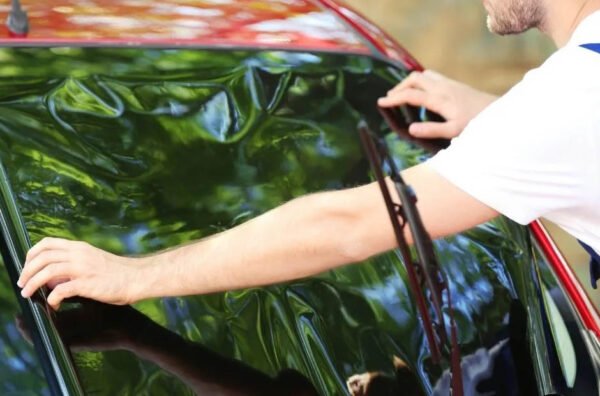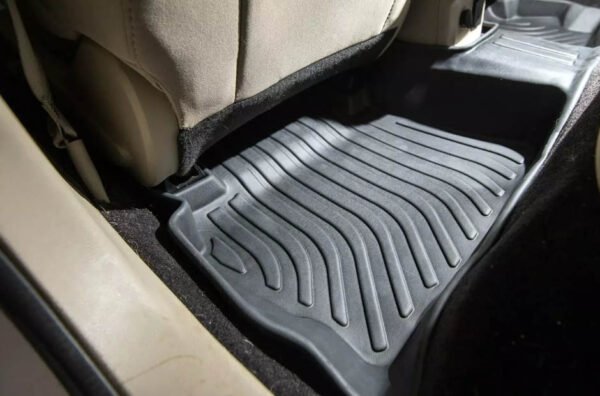Locks and keys are an integral part of our history. According to locksmith in Denver, humans have been using locks and keys for over 4000 years, and historians have identified their use as far back as ancient Egypt. Ever since we developed the concept of personal property, we have utilized locks and keys to keep our property safe and secure.
With our busy, hectic lives, we don’t realize the importance of everyday items like locks and keys, and we take them for granted. But then, when they go missing, break or someone steals them, their importance is suddenly brought home to us in a big way. In cases such as this, it’s essential to get in contact with a car key locksmith as soon as possible. To do this, a simple search for “automotive locksmith melbourne” or wherever it is you are located, will get you in touch with an experienced locksmith capable of providing you with a solution to your troubles.
Have you ever wondered how many different car keys there are and how they work?
This article will examine how car keys came to be and how they have changed over the years. Then, by the time you finish reading this article, you will know all about the different types of car keys, how they came to be, and how they work.
Table of Contents
A Brief History of the Different Types of Car Keys
Car keys are interesting because they have a dual purpose. They are ignition keys that start the car motor running, and in conjunction with locks, they are a security mechanism that helps prevent your car from being stolen.
Metal Car Key
Interestingly, the first cars did not need keys to start them, relying instead on the driver cranking up the engine. It wasn’t until the 1940s that Chrysler introduced the first key ignition tumbler as a means of starting a car.
The first car keys were metal, typically steel or brass, and later aluminum, and manufacturers could make them cheaply and quickly. Each metal key has a unique shape composed of metal ridges that match precisely the ridges inside a particular lock. When the key’s ridges and the lock line up, you can turn the key to the on position, and the car’s ignition starts.
The car key is also used to lock car doors and provide security. Initially, car keys were mechanical with no electronic components. The lack of electronic components made it easy for manufacturers to make the original keys and for locksmiths to produce duplicates, which was convenient for car owners when they misplaced or lost their keys.
However, it was easy for car thieves to reproduce metal keys and pick mechanical locks. The metal keys and pin and tumbler lock systems provided scant security against an experienced car thief, and throughout the seventies and eighties, car theft steadily increased each year.
Centralized Locking and Transponder Keys
In the mid-to-late 1990s, two inventions revolutionized car keys and locks. The first invention was centralized locking. Centralized locking is like a master control system where locking one door locks all the doors. The advantages of centralized locking are that it eliminates having to lock each door individually and increases security by eliminating the possibility of leaving a door unlocked.
The transponder key was the second 1990’s invention that had a significant effect on car security. Transponder keys contain a chip within the key fob, which communicates with the car’s computer telling it to start the engine when the key is inserted into the ignition.
Transponder keys have helped significantly reduce the incidence of car theft because a thief cannot start the engine without the transponder key.
Laser-Cut Key
A laser-cut key is typically a standard metal key cut using a laser. The laser key does not provide any specific theft protection. Still, cutting by a laser means it incorporates a complicated patterned cut that is next to impossible to duplicate without using laser cutting equipment.
Laser keys are more challenging for thieves to duplicate, and locks made for laser keys are more complex for thieves to pick. Other advantages of laser-cut keys include; flexibility, precision, repeatability, automation, quality, contactless cutting, and versatility.
Flip-Key
The flip key, also known as the switchblade key, is a popular choice of car key primarily because of its design. The flip keys feature a design that is both fashionable and convenient. The flip key can be folded away inside the key-fob when not in use, and its small compact appearance is considered more fashionable and convenient.
Smart Key
As in most areas of modern existence, technology has come to the fore, and smart keys are now the norm for most cars. The most significant advantage of a smart key is the ease of use and convenience. A smart key need never be inserted into any lock mechanism and can start a motor with literally a push of a button.
You can lock or unlock the doors and turn the alarm on and off with the push of a button. A smart key can lock or unlock your car from a distance and can serve as a locating device. Smart keys offer an increased level of security because their signal is programmed to correspond with your car’s computer and cannot be duplicated by other smart keys.
VATS Key
VATS (Vehicle Anti Theft System) keys are electronic keys that incorporate a resistor embedded into the key blade. VATS keys were explicitly designed to prevent auto theft. When a VATS key is inserted into an ignition, an electrical current runs through the key to the resistor embedded inside the key. The resistor opposes or resists the current and, in so doing, identifies itself to your car’s computer, which then enables the engine to be started.
VATS key signals also offer higher levels of security because they are difficult to duplicate without specialized machinery such as a VATS interrogator.
Valet Key
A valet car is like a spare key but with limited functionality. For example, a valet key gives you access to the engine and doors but prevents you from getting into the vehicle’s private areas like the trunk or glove box. Valet keys are not a standard issue for most cars, but you might be able to order one from your manufacturer for an additional fee.
Conclusion
We have been using car keys since 1910. Since that time, car keys have developed and changed significantly. From simple metal keys used in a pin and tumbler locking system to specialized VATS keys that offer more security, and now the ubiquitous smart key.
Car keys have also expanded in terms of functionality, and the keys of today offer a much-increased level of security compared to the metal keys of yesteryear.
Now you know the different types of keys, and how they operate, all that’s left to do is insert the key in the lock or push the button, start the engine, and hit the road.





